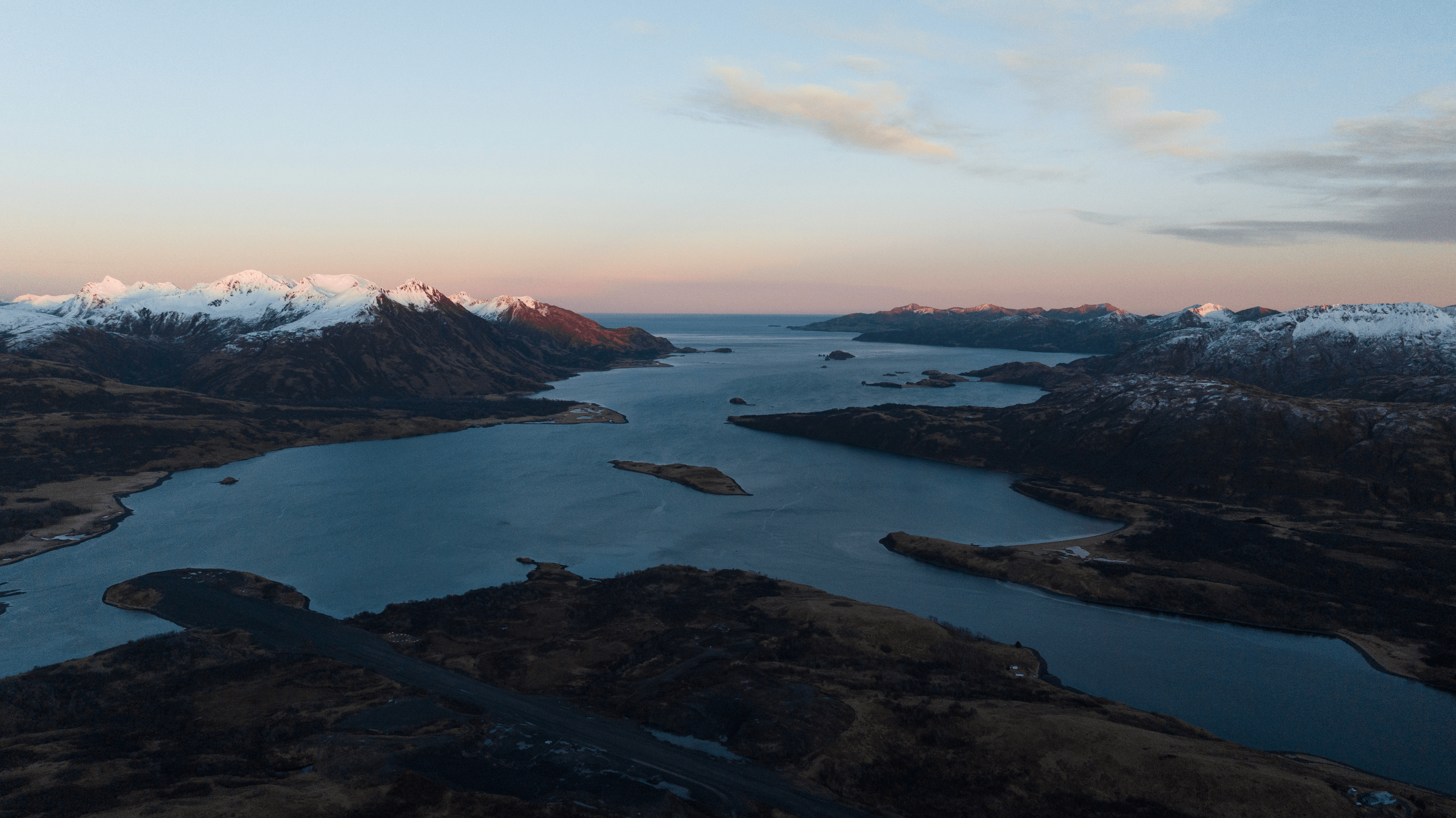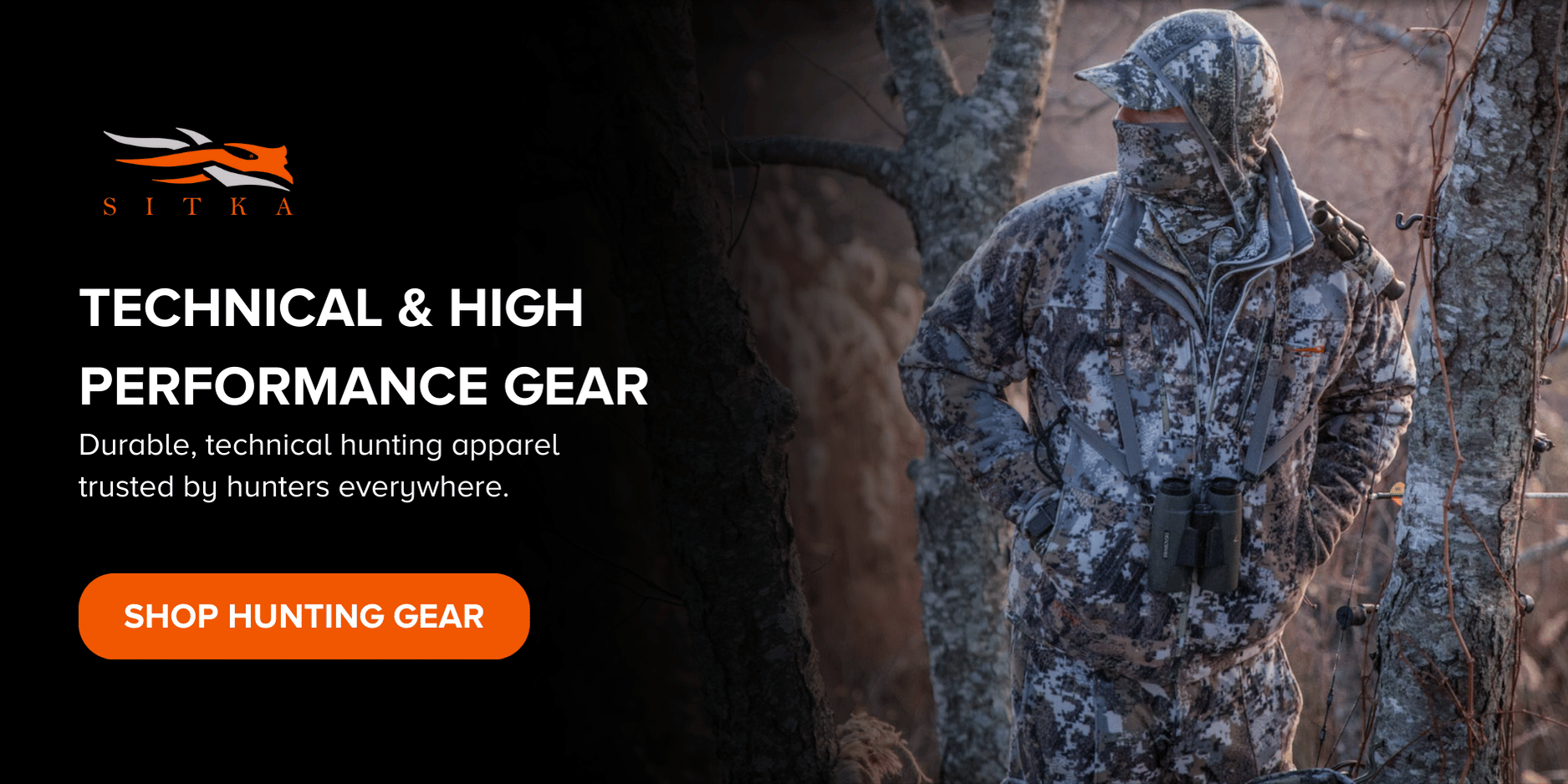Lindsey Davis | 10.6.2025
Bison and Bears in Balance: The Old Harbor Alliance’s Story of Coexistence, Culture, and Sustainability
Deep in the Gulf of Alaska, on a remote island fringed by towering mountains and wild coastline, a powerful story of wildlife, culture, and community is unfolding. With support from the SITKA Ecosystem Grant Program, the Old Harbor Alliance is writing a new chapter in modern wildlife management—one where bison graze peacefully alongside coastal brown bears, and Native communities reclaim food sovereignty through deep cultural reconnection.
A Hunter’s First: Cole Kramer and the Bison of Sitkalidak
For SITKA, Cole Kramer has long been more than just a trusted outfitter—he’s been a friend and a guide into the raw realities of Kodiak Island. For nearly a decade, we’ve leaned on his hard-earned experience to test our gear in the most unforgiving terrain, from storm-lashed coastlines to bear-filled valleys. He’s hunted nearly every species the region has to offer, but until recently, one of North America’s most iconic species eluded him.
On Sitkalidak Island, the Old Harbor Alliance stewards a herd of bison they originally relocated from Wyoming. Introduced as a sustainable food source for the Native community, the herd’s very existence was once a gamble—would the bison find their place in a landscape already dominated by Kodiak’s giant brown bears? To the surprise of wildlife managers and guides and outfitters in the region, the answer has been a resounding yes. Today, the bison and the bears not only coexist but thrive together, creating an inspiring model of ecological balance.
With growing success in the herd, the Old Harbor Alliance opened its hunt system to include select non-Tribal participants. Cole Kramer was the very first—stepping onto Sitkalidak with bow in hand, aware of the rarity and responsibility of the opportunity before him. His hunt was more than a pursuit of game; it was a moment that connected the longstanding friendship between SITKA and Cole with the deeper story of how people, wildlife, and culture can find balance on this rugged island frontier.
A Modern Story Rooted in Deep History
The history of bison on Kodiak Island begins unexpectedly—in the 1980s, when a local rancher transported a herd from Wyoming via the Alaska Marine Highway. With nowhere to roam but the narrow road systems of Kodiak, the bison soon became a challenge. Over the decades, the herd changed hands, were relocated, and at one point, even escaped containment.
But in 2015, Melissa Berns and the tribal leadership of the Old Harbor Alliance saw opportunity where others saw trouble. They envisioned a future in which the bison herd could serve as a renewable, sustainable food source for their community—a way to address food insecurity, restore cultural traditions, and build lasting resilience.
The Tribal Herd: A Cultural and Ecological Opportunity
With support from the Kilcher family and other local ranchers and partners, the Old Harbor Alliance began the careful and ambitious work of rebuilding the herd. Bison were relocated from Fort Peck, Montana, and transported across land and sea—from Anchorage to Homer, then by boat to Sitkalidak Island. In 2022, another 45 animals were added. Today, the herd thrives—and is closely studied to learn more about both woods and plains bison subspecies.
The result is a bison management program unlike any other. It supports food security, culture, and community in powerful ways.
The bison harvest program in Old Harbor is structured into three tiers, each serving a distinct purpose within the community. Cultural hunts prioritize providing meat to elders, youth, and tribal programs, with harvests specifically designated for cultural gatherings, potlatches, and camps. Draw hunts for Tribal Members offer a sustainable, community-led model in which shareholders and residents of Old Harbor can apply to harvest animals together, promoting shared responsibility and minimizing waste. Commercial hunts involve raffled opportunities for select participants, helping to generate funding for the program and broaden its reach.
Since the herd’s growth, nearly 60 animals have been harvested under these tiers, offering not just sustenance but pride and participation in a revitalized relationship with land and tradition.
Coexistence with Giants: The Bison and the Bears
Kodiak is home to some of the largest brown bears in the world—animals that had nearly vanished from the island by the late 1970s. But with cattle gone and habitat recovering, bears have rebounded dramatically. Thanks to a dual collaring program led by the Alaska Department of Fish and Game, researchers have tracked a fascinating dynamic: the bison and the bears are thriving—together.
The bison, far more resilient than cattle, graze side by side with bears. In some cases, they’ve swum off-island, learning to navigate the archipelago just like the bears do. Researchers have observed the two species sharing the ecosystem peacefully, with the bison creating openings in the snow that benefit deer and other animals in winter. These animals aren’t just surviving—they’re helping create an ecosystem mosaic.
Bears forage on salmon streams while bison graze nearby. Deer flourish where bison have cleared brush. In the balance of this island, coexistence isn’t just possible—it’s beneficial.
People, Wildlife, and a New Model for Management
The Old Harbor Alliance’s work is about more than just animals—it’s about the people who call this place home. Through partnerships with the Alaska Department of Fish and Game, the Alliance has crafted a model that allows for sustainable harvests for both residents and non-residents while preserving ecosystem health.
It’s also a model of what can happen when Indigenous knowledge and modern wildlife science collaborate. From GPS collaring to culturally informed harvests, every piece of the program is grounded in respect for both ecological complexity and human connection to the land.
Looking Ahead
From humble origins, the Old Harbor bison herd has become a symbol of resilience—not just for the animals, but for the people. As Cole Kramer, the first non-Native person to hunt a bison in this program, experienced firsthand, this is a community-led effort that welcomes others into a broader story of stewardship and culture.
The SITKA Ecosystem Grant Program exists to support efforts that honor the intertwined legacies of land, wildlife, and people. The Old Harbor Alliance is a great example of how thoughtful stewardship can create abundance and balance amidst the complexity of wildlife management today.
Lindsey Davis
In addition to being the Director of Conservation and Advocacy at SITKA Gear, Lindsey Davis is also an entrepreneur, advocate, writer, and naturalist based in Utah. A passionate conservationist, she is a proponent of living more sustainably and closely connected with the land.

